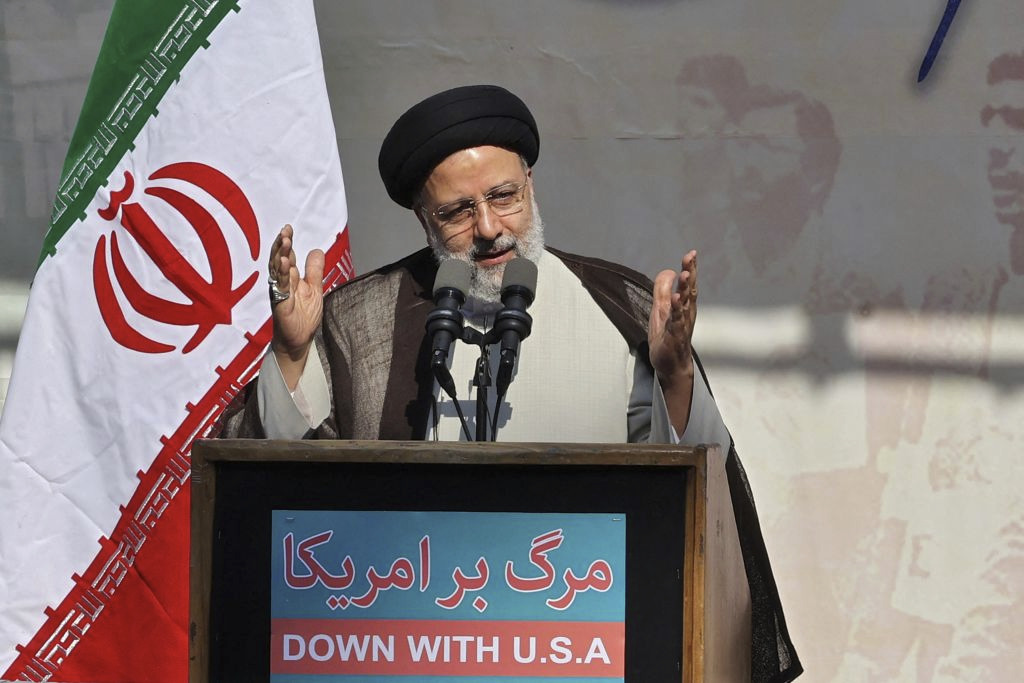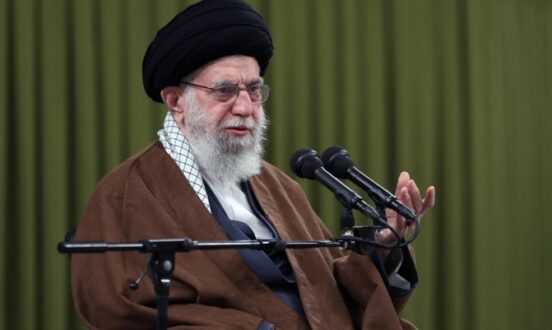gatestoneinstitute.org – What does an autocrat do when his support base is shaken by popular protests?
The standard answer is: he tries to reassure supporters by increasing their privileges, thus giving them a bigger stake in the preservation of the status quo.
Transfer of public assets to chosen supporters has a routine pattern.
The supporter, usually a senior IRGC officer or a senior mullah, secures a low-interest loan from a state-owned bank to buy a state-owned asset at rock-bottom price. Almost always this is just a formality. Once the asset is acquired, the new owner forms a company and sells parts of its shares to others, making a huge profit. Those who acquire prime real estate make especially big killings.
One problem remains: will retired or cashiered generals feel confident enough about the regime’s future to embark on the recycling scheme offered?

What does an autocrat do when his support base is shaken by popular protests?
The standard answer is: he tries to reassure supporters by increasing their privileges, thus giving them a bigger stake in the preservation of the status quo.
This is what Islamic Republic’s “Supreme Guide” Ayatollah Ali Khamenei is trying to do with an edict for the largest privatization scheme in Iran’s history.
Unveiled last week, the scheme is the seventh of its kind since the first was launched 23 years ago.
The new scheme offers four novelties:
First, unlike previous schemes it sets no limit to what tangible assets could be sold.
Second, it waives oversight on a case-by-case basis by the Cabinet and the Islamic Majlis (ersatz parliament).
Third, it sets no time limit for the scheme, in effect giving a seven-man coterie the right to sell state assets for as long as they deem fit.
Finally, it appoints a seven-man committee to supervise implementation while granting them irrevocable immunity from any prosecution related to the scheme.
This last point is especially important because it gives a few individuals, all connected with the Islamic Revolutionary Guard Corps (IRGC), the power to transfer unspecified public assets to whomever they wish.
Distributing favors as a means of buying or maintaining political support has been a feature of the Islamic Republic since its inception in 1979.
In 1980, months after seizing power, Ayatollah Ruhollah Khomeini approved a massive expropriation scheme implemented outside of any formal state structure.
Under the scheme, thousands of mullahs, or individuals dressing as mullahs and growing beards for the occasion, seized private property in the name of instantly created “Islamic charities”.
In 1985, the Interior Ministry reported that more than 75,000 businesses and private homes had been seized, in most cases from owners who had fled the country.
The properties seized were described as “ghanimah” (war booty) in accordance with shariah rules. Khomeini issued a decree claiming that saying prayers in the confiscated properties would be acceptable.
Then the governments of President Abol-Hassan Bani-Sadr and Prime Minister Mir-Hussein Mussavi conducted a massive nationalization scheme that increased the share of public sector in the economy from 55 percent under the Shah to 70 percent.
The new regime used the scheme to reward supporters by creating jobs for the boys and transferring wealth from pre-revolution business elites to new emerging revolutionary ones.
To cite one example, Ayatollah Hadi Ghaffrai, the initial founder of Hezbollah, suddenly became CEO of Iran’s largest producer of stockings.
By the early 1990s, however, the mullahs feared that a post-revolution bourgeoisie was taking shape and might challenge the regime.
To forestall that danger, then President Ali-Akbar Hashemi Rafsanjani developed the idea of “khosulati“, a private-public sector of the economy controlled by the political mullahs and their military-security allies, outside the rules of public and private sectors.
The new scheme became the backbone of the rentier economy, in which access not only to wealth-making opportunities but also to normal public services is ensured through a single channel: loyalty to the system and the “Supreme Guide”.
This hybrid sector consisted of over 400 foundations and charities of different sizes, ad-hoc outfits such as “The Imam’s Aid Committee “, the “Committee for Implementing the Imam’s Orders”, funds and holdings related to holy shrines, supposedly interest-free Islamic banks, insurance companies, numerous real or imaginary cooperatives, and more than 30 newly created service and consultancy companies mostly related to the oil industry.
The hybrid sector also expanded into the transport industry by owning four airlines, six shipping lines, and several car manufacturing companies, the nation’s largest public building contractor, and several holding and investment groups.
Four supermarket chains related to the IRGC and the regular army, a chain of hotels and tourist resorts and, last but not least, the takeover of the communications industry, including mobiles phones and mail, dramatically increased the share of the sector.
Within the sector, the IRGC controlled 25 ports from which it could import and export goods without going through normal customs channels.
By the year 2000, when the first formal privatization scheme was launched, the hybrid sector represented 20 percent of the national economy.
According to Professor Hassan Mansour, a distinguished Iranian economist, in 2022, the public sector accounted for 61 percent of the economy with 39 percent going to hybrid and a shrinking classical private sector.
The emergence of the rentier economy could be narrated through successive corruption scandals, mostly implicating IRGC generals.
Stephane A. Dudoignon, a French specialist on the IRGC, suggests that it was in Rafsanjani’s second term as president that corruption became systemic, which means it was no longer an exception to the rule but the rule itself; in fact, a way of life.
On occasions, the scandals forced the regime to arrest some senior IRGC officers, such as Masood Mehrdadi, once known as the IRGC’s “economic brain”, and organize show trials. Several other prominent IRGC figures, such as Brigadier Gens. Ahmad Vahidi, the first chief of the Quds Force, Muhammad Baqer Qalibaf, Hussein Tala, Muhammad Esmail Kowthari, Rostam Qassemi and Hushang Allah-Dad, chief treasurer of the Quds Force, and Jamaleddin Aberumand have been implicated in alleged corruption cases since 1989.
The late Lt. Gen Qassem Soleimani was also mentioned as a major shareholder in more than 20 businesses in Iran, Iraq, Syria and Lebanon while controlling the secret budget of the Quds Force, which exempted him from legal scrutiny by the Cabinet or the Majlis.
Transfer of public assets to chosen supporters has a routine pattern.
The supporter, usually a senior IRGC officer or a senior mullah, secures a low-interest loan from a state-owned bank to buy a state-owned asset at rock-bottom price. Almost always this is just a formality. Once the asset is acquired, the new owner forms a company and sells parts of its shares to others, making a huge profit. Those who acquire prime real estate make especially big killings.
Usually, a part of the profits is immediately stashed away in bank accounts abroad.
The scheme also enables the regime to recycle as businessmen the huge number of brigadier-generals that the IRGC and the regular army produce each year.
The current purge of the officer corps adds some urgency to the latest privatization scheme.
One problem remains: will retired or cashiered generals feel confident enough about the regime’s future to embark on the recycling scheme offered?
Amir Taheri was the executive editor-in-chief of the daily Kayhan in Iran from 1972 to 1979. He has worked at or written for innumerable publications, published eleven books, and has been a columnist for Asharq Al-Awsat since 1987.
This article was originally published by Asharq al-Awsat and is reprinted by kind permission of the author.
 Shabtabnews In this dark night, I have lost my way – Arise from a corner, oh you the star of guidance.
Shabtabnews In this dark night, I have lost my way – Arise from a corner, oh you the star of guidance.



